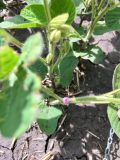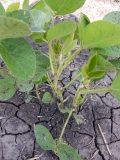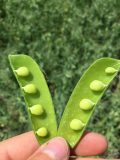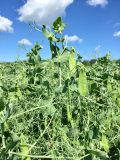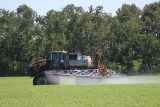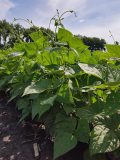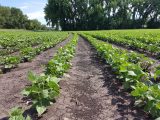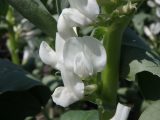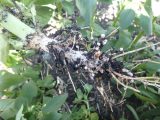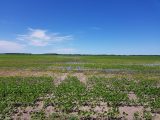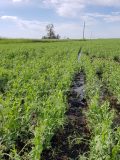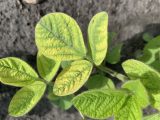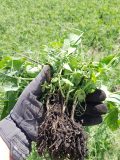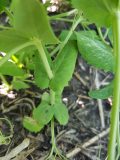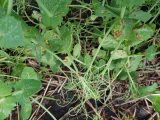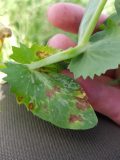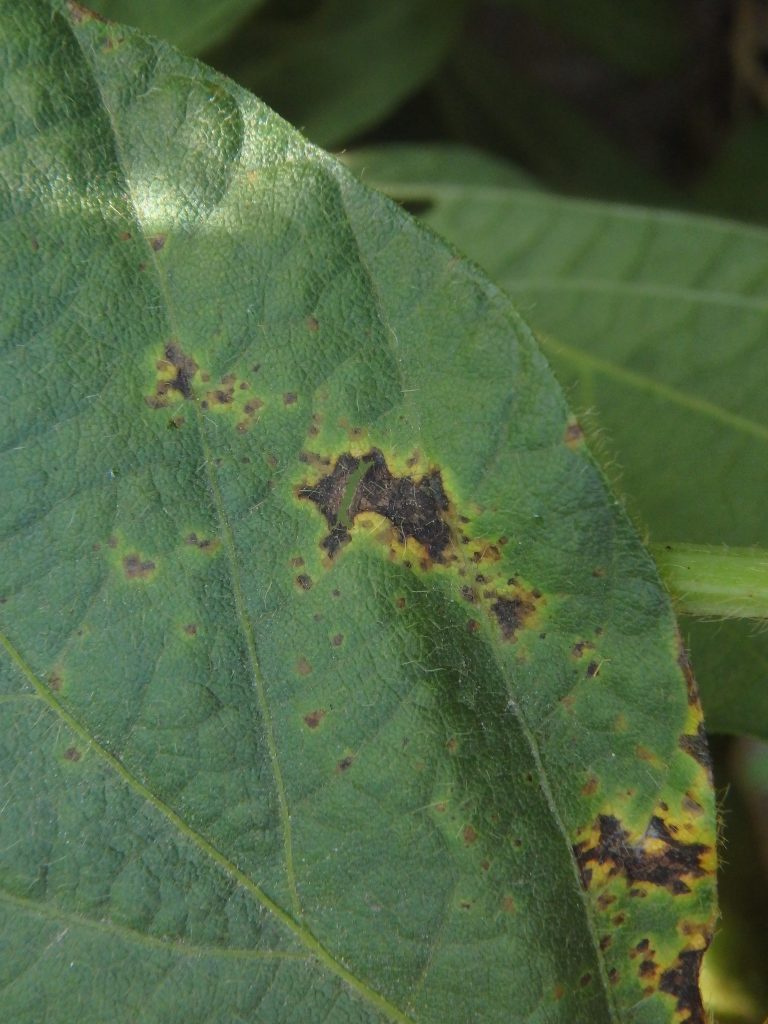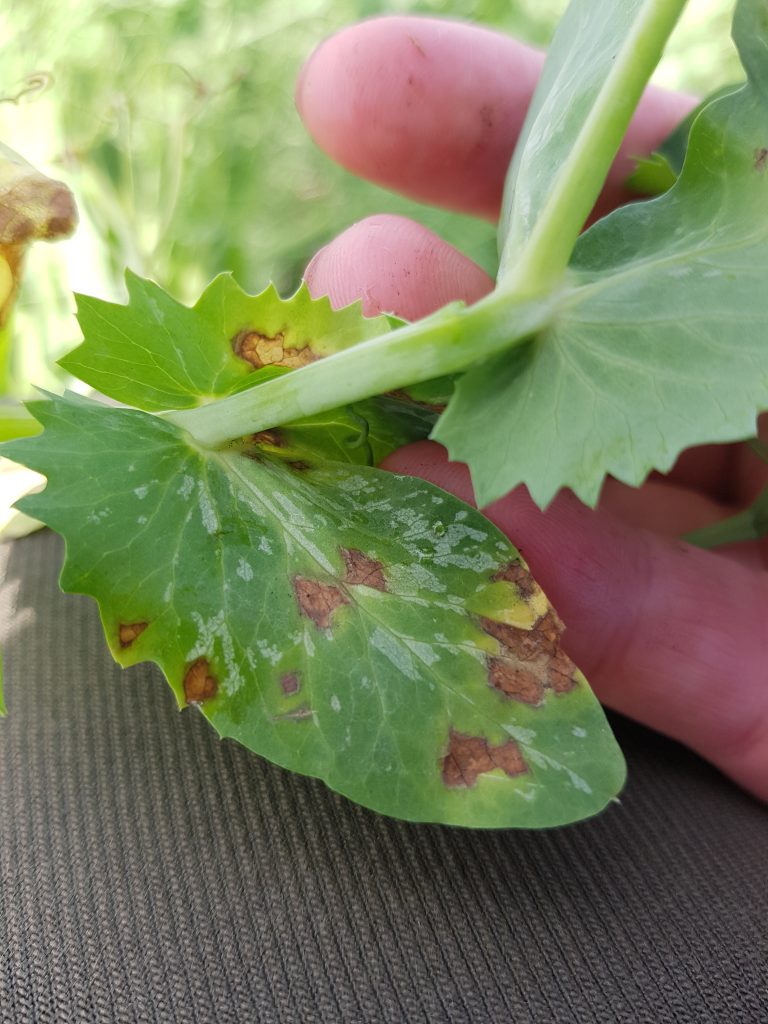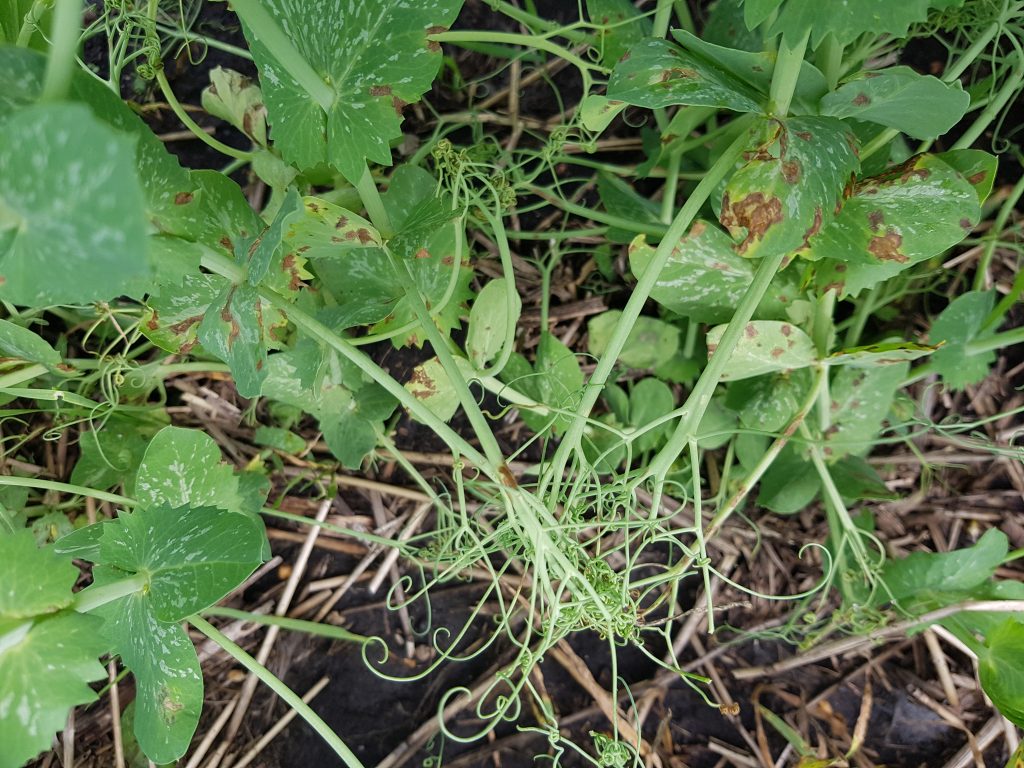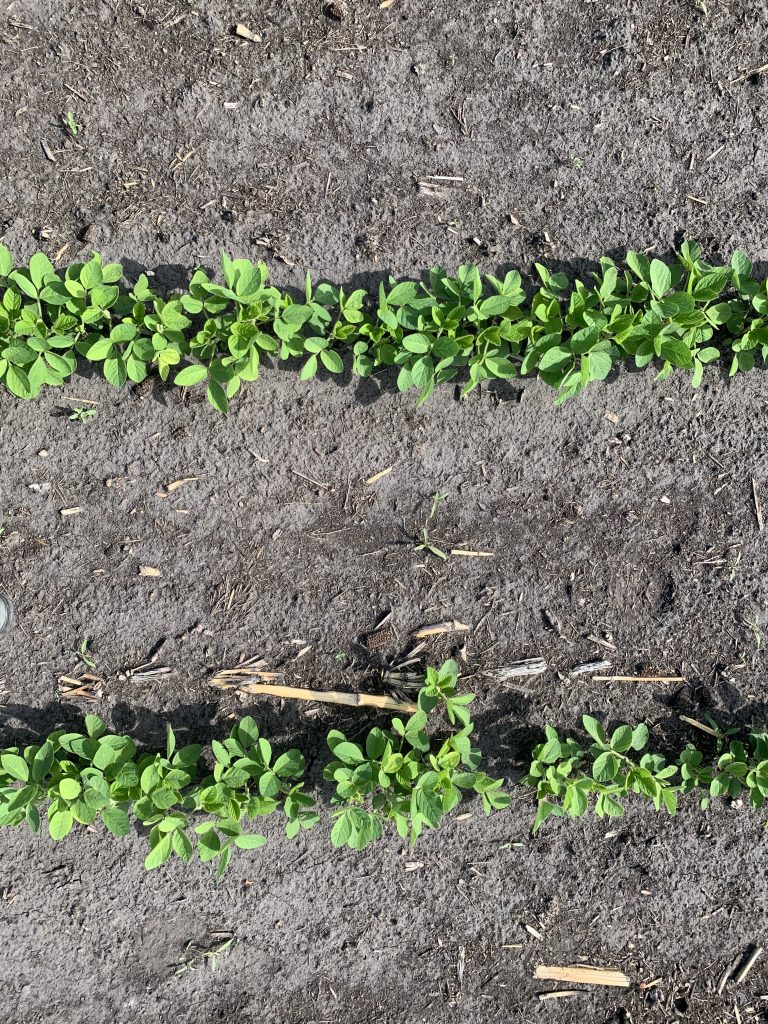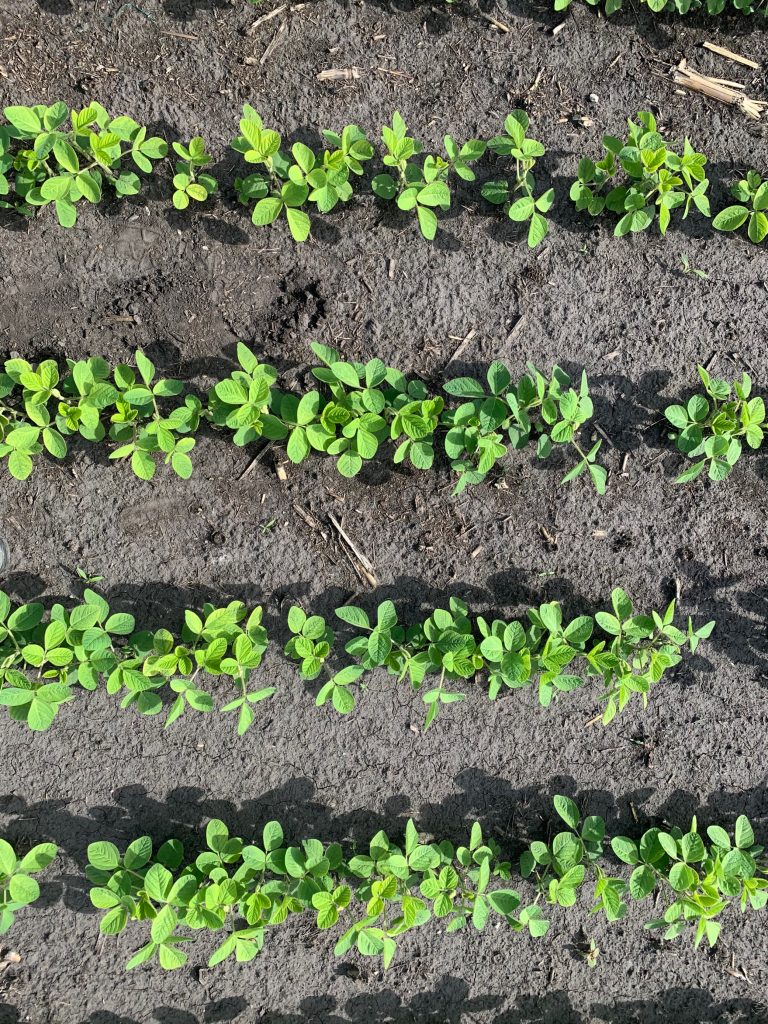JULY 8, 2020
- Crop Update
- Crop Conditions
- Soybean Nodulation Assessment
- Bacterial Blight in Soybeans and Pulses
- Fungicide Decisions for Dry Beans
- Critical Period of Weed Control in Soybeans
- On-Farm Network Update
- WEBINAR: Managing Herbicide-Resistant Weeds in Soybeans on July 30
Crop Update
- Soybeans range from V2 to flowering, with up to 8 trifoliate leaves in the earliest crops.
- Dry beans range from V3 to the flower bud stage. Most dry beans have have several trifoliates and are approaching the bud stage.
- Field peas range anywhere from 10th node to the early pod stage (R3), with most peas at full flower this week.
- Faba beans are at full flower (R3) to early pod (R4).
Crop Conditions
- Many crops in western MB are in standing water or very saturated soil due to torrential rainfall last week. Fields near the eastern growing region edges in MB are also still quite saturated from previous and continuing rains. Peas and dry beans are more sensitive to excess moisture, whereas soybeans are quite resilient.
- Iron deficiency chlorosis (IDC) symptoms are present across the province, mainly in soybeans and a little bit in dry beans. This condition shows up as interveinal chlorosis and is directly related to water and salinity in your field. If plants recover by V5/V6, yield loss should be minimal. This is a good opportunity to take note of your variety’s tolerance to IDC.
- Disease symptoms showing up in different fields:
- Bacterial blight in pulse and soybean crops, mainly in the lower canopy due to previous environmental damage.
- Mycosphaerella blight (or the Ascochyta disease complex) in the lower canopy of peas, which is the main target of foliar fungicide.
- Root rot in pulse and soybean crops from earlier infection or setting in due to wet soil conditions.
- Pea aphids were first spotted earlier this week near Minto. Continue to scout for pea aphids throughout flowering.
Soybean Nodule Assessment
- Assess nodulation at R1 to determine if your soybeans have enough nodules for sufficient N-fixation (10 or more per plant, on average).
- Use a shovel to dig up roots and soak them in water to remove excess soil without breaking off nodules.
- Cut nodules open to assess the colour. Pinkish-red nodules are actively fixing N.
- If nodule activity or number is insufficient, consider a rescue N-treatment of 50 lbs N/ac at R2-R3 (full flower to early pod).
- Look for lemon-shaped cysts that may be on the roots, caused by soybean cyst nematode. These cysts will be much smaller than root nodules.
Research is underway to examine and improve the N-fixing ability of Rhizobium strains for dry beans in MB. Dry beans are currently supplied with nitrogen by fertilizer, but you may be surprised to find nodules in your current crop. Get out there and dig up those dry bean roots too!
Bacterial Blight in Soybeans, Peas and Dry Beans
- Common in pulse and soybean crops this year. So far, showing up in the lower canopy due to early-season storms and leaf damage. This disease is not typically yield-limiting in the severities we see across Manitoba. Watch this video for a close-up and quick ID tips in soybeans.
- Leaf tearing and stem damage following high winds, heavy rain and hail earlier in the growing season provided an infection site for the bacteria.
- Cool, wet conditions favour bacterial disease development.
- First appear as water-soaked lesions and develop into angular, necrotic lesions often surrounded by yellow margins.
- Disease identification is crucial since fungicides will not control this bacterial disease, but will control fungal disease look-alikes.
- In soybeans, one disease look-alike is Septoria brown spot, which first appears in the lower canopy and progresses upwards, while bacterial blight is more often in the upper canopy.
- In peas, bacterial blight can often be confused with Mycosphaerella blight infection. NDSU has put together this helpful guide to aid in differentiating between the two.
- Bacterial blight lesions are broken up by leaf veins, resulting in an angular appearance. Mycosphaerella lesions first appear as purplish-brown flecks or large brown lesions with a distinct concentric ring pattern in the lower canopy.
Foliar Fungicide Decisions for Dry Beans
- Foliar fungicides to control white mould are preventative, meaning they are applied before disease symptoms are visible.
- The Fungicide Decision Worksheet for Managing White Mould in Dry Beans (also available in the Bean App) can help determine the risk of disease development, based on environmental and agronomic factors, and aid in the decision of whether or not to apply a fungicide.
- The R2/early pin bean stage is the best time to apply fungicide for effective white mould control. This stage coincides with flowering (100% of plants with an open blossom) and early pod development (first pin-pods are 0.5 to 1″ long).
- If warm, humid conditions persist, a second fungicide application may be considered 10 to 14 days after the initial application.
- If you’re on the fence about fungicide application in dry beans this year, we still have product available for On-Farm Network dry bean fungicide trials. Contact Megan Bourns, On-Farm Network Agronomist at 204-751-0439 for more information.
Optimal fungicide timing for white mould control in soybeans is at early to full R2 growth stage (80 to 100% of plants at R2 growth stage), when plants have at least one open blossom at one of the top two nodes of the plant. To date, eight of 59 On-Farm Network trials evaluating foliar fungicide applications in soybeans have resulted in a yield increase. Read more about these OFN results and the annual soybean disease survey results here.
Critical Period of Weed Control in Soybeans
The critical period of weed control (CPWC) refers to how long soybeans must remain weed-free to keep yield loss below 5%. Research in MB has shown that soybeans must remain weed-free until V2 to V4, on average, and until R1 in some cases. Planting competitive varieties at narrower row widths and higher densities effectively shortened the CPWC in soybeans in MB. With later-seeded soybean crops and late weed flushes, continue to monitor weed pressure until flowering or canopy closure.
An Update from the On-Farm Network
When it rains it pours! Fungicide trial establishment in field peas, dry beans and faba beans is in full swing and will shortly be followed by soybean fungicide trials. Disease ratings at each fungicide trial will be the keeping the OFN team and partner researchers hopping for the next while. The quantification of canopy closure at the soybean row spacing trials as well as assessing the impacts of post emergence (V3-V4) rolling in soybeans will also be getting our attention at some trials starting later this week.
Are you interested in hosting a dry bean fungicide trial on your field? It’s not too late to sign up! Contact On-Farm Network Agronomist, Megan Bourns: 204-751-0439 | megan@manitobapulse.ca



